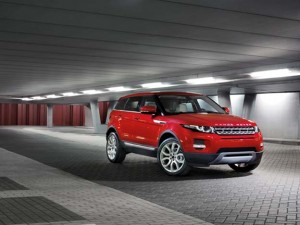In the “bubble years,” prior to the economic meltdown, leasing had become the option of choice for millions of American motorists, accounting for a majority of the business for some luxury brands. After all but vanishing during the downturn, leasing is now poised to make a major comeback, suggests the Automotive Leasing Guide.
Also known as ALG, and a principle benchmark for residual values and depreciation data, the publication predicts a significant resurgence in the automobile leasing market that will continue right on through 2015.
The luxury segment will lead the way with lease penetration rates rising to nearly 43% by 2012, while lease penetration in the mainstream market will increase to 17.5% over the next two years, according to the new estimates prepared by ALG.
Numerous brands are expected to capitalize on this leasing resurgence, based on the ALG 2011 March/April edition and current high residual values forecasts, which allows them to offer highly competitive monthly lease payments.
Lease rights are technically based on what a vehicle is expected to be worth at the end of the contract, typically two to four years. A customer pays for only the decline in value of the vehicle, or the sale price minus the residual. A lender then factors in credit rates and the incentives that makers have typically used to subsidize leasing.
Heavy incentives prior to the industry’s sales collapse meant lease customers often paid just half what the same vehicle might cost to purchase outright.
During the economic crisis of 2009 and 2010, leasing rates plunged. While makers often cut back subsidies, the real issue became credit availability. Ally, the former GMAC, all but stopped offering lease deals through General Motors dealers, and a number of other makers faced similar problems
Credit for leases is now becoming more readily available.
For example, Don Johnson, GM vice president of sales, said the automaker has stepped up its leasing activities and it’s helped bolster sales totals in the last two months. GM only began to rebuild its leasing business last year, as it began to regain support both from Ally Bank and from its fledgling General Motors Finance unit, which was created last year.
Many consumers prefer to lease because it leaves a vehicle’s depreciation on the balance sheet of the bank or finance company rather than their own balance sheets.
Right now the luxury brands with the best residual values are, ranked in order, Land Rover, Infiniti, Acura, Audi and Lexus. The mainstream brands with the highest residual values are, again ranked from the top, Mini, Subaru, Mazda, Honda and Hyundai, according to ALG’s data.
As a result of their improved residual values over the past year, Land Rover is expected to see the biggest gain in leasing in 2011 in the luxury brand category, while in the mainstream brand segment, Hyundai is forecasted to realize the biggest gain in lease deals in the coming years.
However, ALG also forecasts that the residual gap between brands continues to shrink, indicating an increasingly competitive leasing landscape for both the luxury and mainstream markets.
“What we expect to see, for the next several years, is a very positive environment for leasing due to low used vehicle supply resulting in stronger used vehicle values, historically low interest rates and an easing of credit requirements as the overall economic recovery begins to take hold,” said Eric Lyman, director, Residual Value Solutions for ALG.
“As a result, leasing is emerging as an excellent option for dealers looking to move inventory and for buyers eager to get into new vehicles at competitive prices,” he said.
Based in Santa Barbara, California, ALG is a leading provider of data and consulting services to the automotive industry. ALG publishes the “Automotive Lease Guide” – the standard for residual value projections in North America, and has been forecasting automotive residual values for over 45 years in both the U.S. and Canadian markets. ALG is a company of DealerTrack Holdings, Inc.

